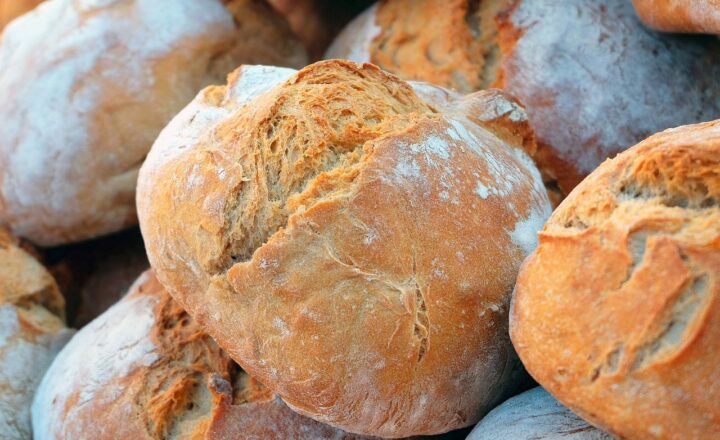From Caster to Confectioner’s: The Many Types of Sugar Used by Bakers
November 12, 2024

Sugar is one of the most vital ingredients in baking, playing a crucial role not only in sweetness but also in the texture, color, and overall flavor of baked goods. For bakers, understanding the different types of sugar and their unique properties is essential. In this article, we will explore the various types of sugar used in baking, including caster sugar, confectioner’s sugar, granulated sugar, brown sugar, and more. Additionally, we will discuss their effects on recipes and tips for using each type effectively.
1. Understanding Sugar: What is Sugar?
Sugar generally refers to any sweet, soluble carbohydrate, which includes a range of sweeteners extracted from plants. The primary form of sugar used in baking is sucrose, commonly derived from sugar cane or sugar beets. Sugars are classified based on their granule size, source, and processing methods.
2. Types of Sugar Used in Baking
Bakers have a variety of sugars to choose from, each serving a specific purpose. Here’s a look at some of the most commonly used types:
2.1 Granulated Sugar
Granulated sugar, also known as table sugar, is the most common type used in baking. This sugar has medium-sized crystals and is ideal for sweetening, creaming with butter, and dissolving easily in recipes.
Uses:
– General sweetening for cakes, cookies, and pastries.
– For creaming with butter in batter-based recipes.
– In sauces, syrups, and desserts.
2.2 Caster Sugar
Caster sugar, or superfine sugar, has finer granules than granulated sugar, allowing it to dissolve quickly. It is particularly useful in recipes where a smooth texture is desired, such as meringues and whipped cream.
Uses:
– Meringues, mousses, and whipped cream.
– Cakes where a fine texture is essential, such as chiffon cakes.
2.3 Brown Sugar
Brown sugar contains molasses, which gives it a distinctive flavor and darker color. The moisture content in brown sugar also adds softness and chewiness to baked goods.
Uses:
– Cookies, especially chocolate chip cookies, to enhance chewiness.
– Cakes and quick breads to provide richness and moisture.
2.4 Confectioner’s Sugar
Also known as powdered sugar, confectioner’s sugar is ground very finely and usually contains a small amount of cornstarch to prevent clumping. It is primarily used for making frostings, glazes, and for dusting desserts.
Uses:
– Icing and frosting for cakes and pastries.
– Dusting over desserts and pastries for a finished look.
2.5 Liquid Sugar
Liquid sugar is syrup-like and is often used in beverages, but can also be included in baking. Its main advantage is that it dissolves readily, making it perfect for recipes where a liquid state is needed.
Uses:
– Sweetening beverages and marinades.
– Recipes where moisture is crucial, like certain dressings or sauces.
2.6 Honey and Other Natural Sweeteners
Although not traditional sugars, honey, agave nectar, and maple syrup are often used in baking as natural sweeteners. These alternatives can impart unique flavors and moisture to recipes.
Uses:
– Healthier alternatives in baked goods and sweets.
– Adding distinct flavors to recipes.
3. Choosing the Right Sugar for Your Recipe
Choosing the right sugar is vital for the outcome of your baked product. Here are a few tips:
– Consider Texture: If you want a smooth texture, opt for caster or confectioner’s sugar. For chewy textures, brown sugar is usually ideal.
– Adjust for Moisture: Brown sugar adds moisture while white sugar adds crispness. Adjust your recipe accordingly.
– Dissolution Rates: Use caster sugar in recipes that require quick dissolution.
– Flavor Profile: For a richer flavor, brown sugar or natural sweeteners can enhance your baked good.
4. Tips for Substituting Sugars
Substituting one type of sugar for another can often be done but requires adjustments:
– Granulated vs. Brown Sugar: You can replace granulated sugar with brown sugar using two-thirds the amount, but expect a slight flavor change.
– Using Confectioner’s Sugar: When substituting powdered sugar for granulated sugar, reduce the amount by using half for a similar level of sweetness.
– Liquid Sweeteners: If using honey or syrup in place of granulated sugar, use a 3/4 cup for every cup and reduce liquid components in your recipe.
5. Conclusion
Understanding the various types of sugar and how they interact with other ingredients can significantly enhance your baking experience. Whether you need the fineness of caster sugar for delicate meringues or the rich flavor of brown sugar for chewy cookies, each type of sugar has its place in the oven. By choosing the right sugar for your recipes and understanding how to use them, you can elevate your baking to new heights. Happy baking!







